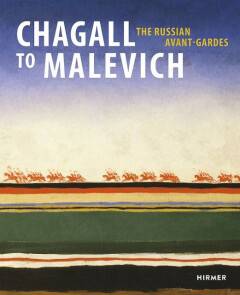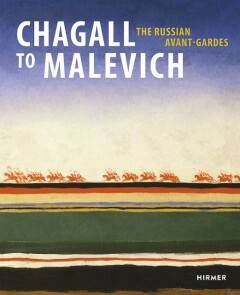
- Afhalen na 1 uur in een winkel met voorraad
- Gratis thuislevering in België vanaf € 30
- Ruim aanbod met 7 miljoen producten
- Afhalen na 1 uur in een winkel met voorraad
- Gratis thuislevering in België vanaf € 30
- Ruim aanbod met 7 miljoen producten
Zoeken
Chagall to Malevich
The Russian Avant-Gardes
Helmut Altrichter, John E. Bowlt, Boris Groys
Hardcover | Engels
€ 52,73
+ 105 punten
Omschrijving
When Marc Chagall, Kasimir Malevich, and the other artists of the Russian Avant-Garde created art in opposition to the sanctioned style of Socialist Realism, they set off an artistic revolution that represents a fascinating chapter in the history of twentieth-century art. Reaching its creative zenith between 1905 and 1934, the movement is best known for combining Cubism with the forward-looking vision of the Italian Futurists, but the movement was also much more diverse than is generally realized.
This book presents for the first time a comprehensive look at the scope of the Russian Avant-Garde movement through a sequence of 130 major and minor works by Chagall and Malevich, as well as Nathan Altman, Alexandra Ekster, Natalia Goncharova, Wassily Kandinsky, Mikhail Larionov, El Lissitzky, Kusma Petrow-Wodkin, Liubov Popova, Alexander Rodchenko, and many others. Together, these works show how widely different styles and design principles developed in parallel. While some turned to expressionism and pure abstraction, others drew inspiration from the successive movements of primitivism, Cubo-futurism, and suprematism. Artists within the movement frequently drew inspiration from one another, but their aesthetic views were also at times in conflict.
With a wealth of full-color illustrations, Chagall to Malevich: The Russian Avant-Gardes offers a rich sense of this radically innovative tradition, presenting the diversity of the movement while reinforcing its broader aim of challenging conventions of art at the time.
This book presents for the first time a comprehensive look at the scope of the Russian Avant-Garde movement through a sequence of 130 major and minor works by Chagall and Malevich, as well as Nathan Altman, Alexandra Ekster, Natalia Goncharova, Wassily Kandinsky, Mikhail Larionov, El Lissitzky, Kusma Petrow-Wodkin, Liubov Popova, Alexander Rodchenko, and many others. Together, these works show how widely different styles and design principles developed in parallel. While some turned to expressionism and pure abstraction, others drew inspiration from the successive movements of primitivism, Cubo-futurism, and suprematism. Artists within the movement frequently drew inspiration from one another, but their aesthetic views were also at times in conflict.
With a wealth of full-color illustrations, Chagall to Malevich: The Russian Avant-Gardes offers a rich sense of this radically innovative tradition, presenting the diversity of the movement while reinforcing its broader aim of challenging conventions of art at the time.
Specificaties
Betrokkenen
- Auteur(s):
- Uitgeverij:
Inhoud
- Aantal bladzijden:
- 312
- Taal:
- Engels
- Geïllustreerd:
- Ja
Eigenschappen
- Productcode (EAN):
- 9783777425771
- Verschijningsdatum:
- 15/08/2016
- Uitvoering:
- Hardcover
- Formaat:
- Genaaid
- Afmetingen:
- 251 mm x 307 mm
- Gewicht:
- 2177 g

Alleen bij Standaard Boekhandel
+ 105 punten op je klantenkaart van Standaard Boekhandel
Beoordelingen
We publiceren alleen reviews die voldoen aan de voorwaarden voor reviews. Bekijk onze voorwaarden voor reviews.








